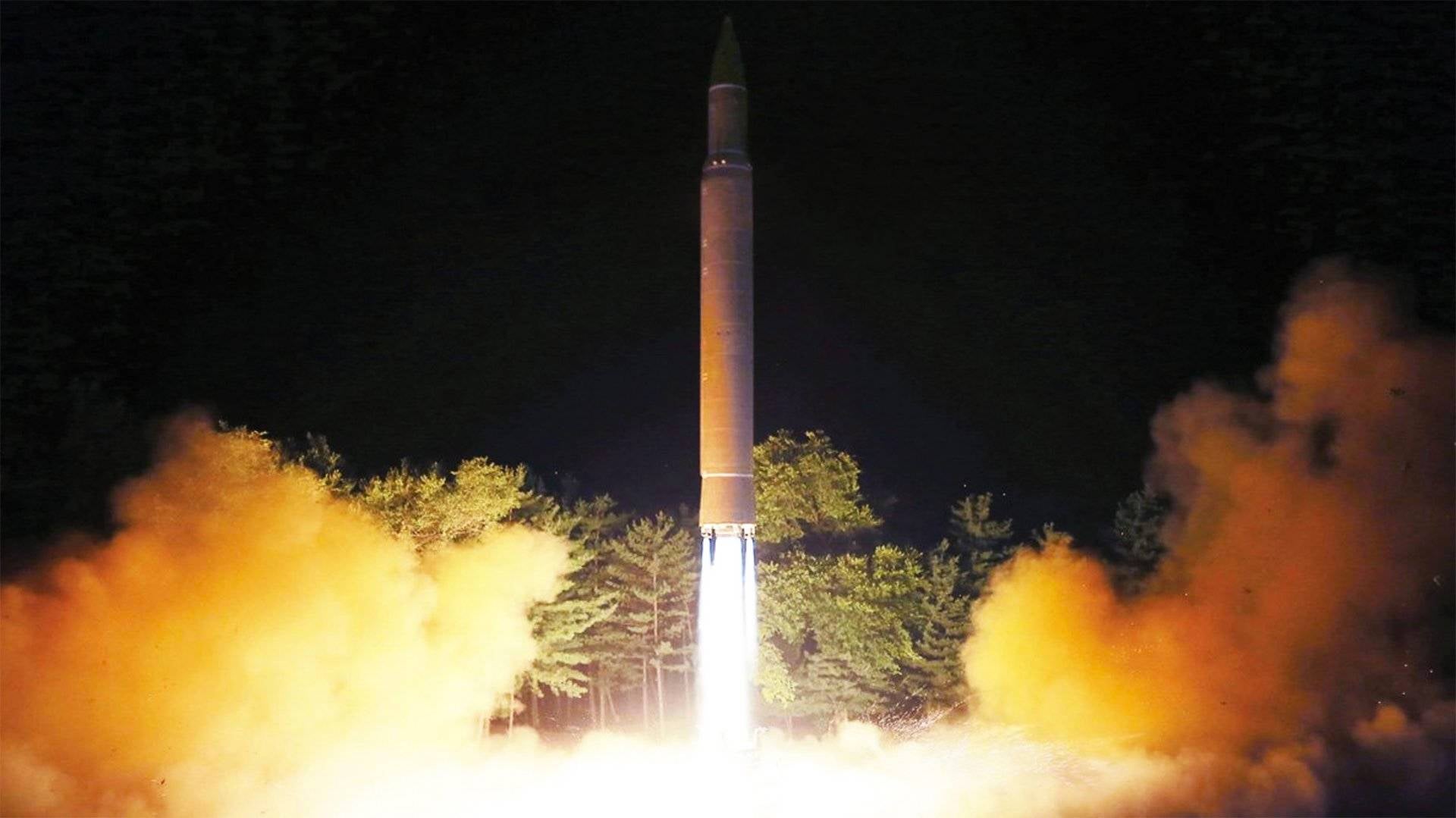It’s been since September 15th that Pyongyang fired off a ballistic missile—that is until today. The nighttime test launch sent a projectile on a very steep parabolic flight profile over the Korean Peninsula and the Sea of Japan, with the missile splashing down 600 miles from its launch point. Although the metrics are likely to change, at this time South Korea’s Yonhap News reports that the missile reached an altitude of 2,800 miles. If true, this would be the most advanced and longest-range missile test North Korea has ever executed.
The missile flew for nearly an hour, 50 minutes to be exact, and originated from Sain Ni, North Korea. The Pentagon’s initial assessment also states that it was an ICBM, and President Trump was supposedly briefed while the missile was still in flight.

The last time North Korea conducted an ICBM test, one of only two launches so far, the missile traveled roughly 620 miles laterally and reached an altitude of 2,300 miles. With this in mind, this latest launch would represent a massive leap in capability, adding nearly 500 miles in altitude which translates into far greater range when fired on a downrange optimized attack profile.
The July 28th Hwasong-14 launch profile resulted in an estimated range of over 6,000 miles. This latest launch would likely signify a range increase of roughly 20 to 25 percent, or an estimated range of roughly 7,200 miles. Such reach would put almost anywhere in the Continental US within striking distance for Pyongyang, including Washington DC and New York City.
Once again, these metrics will likely change somewhat as more telemetry and tracking information is released and studied.
The launch also smacks down ridiculous theories that the Trump Administration’s bellicose rhetoric, constant and growing displays of force, and demands for total and unconditional denuclearization (in other words total capitulation) by North Korea have somehow changed the rogue regime’s immediate behavior or long-term nuclear strategy.
We will keep this post updated over the next 12 hours as more information becomes available.
Update 1:25pm PST:
The President addressed the launch by saying simply that “well handle it” and “we’ll take care of it.” Secretary of Defense Mattis had a little more to say and noted that the missile indeed had greater performance than what has been seen in any previous test. Full video:

Update 7:30pm PST:
Perfectly predictable and on cue, ROK forces fired some short-range ballistic missiles following North Korea’s ICBM launch. A consistently lame, pointless, wasteful and childish reactionary display of force.
North Korea claims the missile is a “Hwasong-15,” which is a new designation, and that it can hit the entire US. This concurs with our initial estimate.
North Korean state media says Kim Jong Un personally oversaw the launch of the Hwasong-15. We are still waiting on pictures and video from the launch site.
The Hwasong-15, or HS-15, could be an evolutionary upgrade and refinement of the HS-14 ICBM. There has been much talk of North Korea enhancing the missile’s abilities over the last few months, including the possible addition of a solid fuel second stage.
Update 7:50pm PST:
Here is the entire statement released by KCNA:

Contact the author: Tyler@thedrive.com
